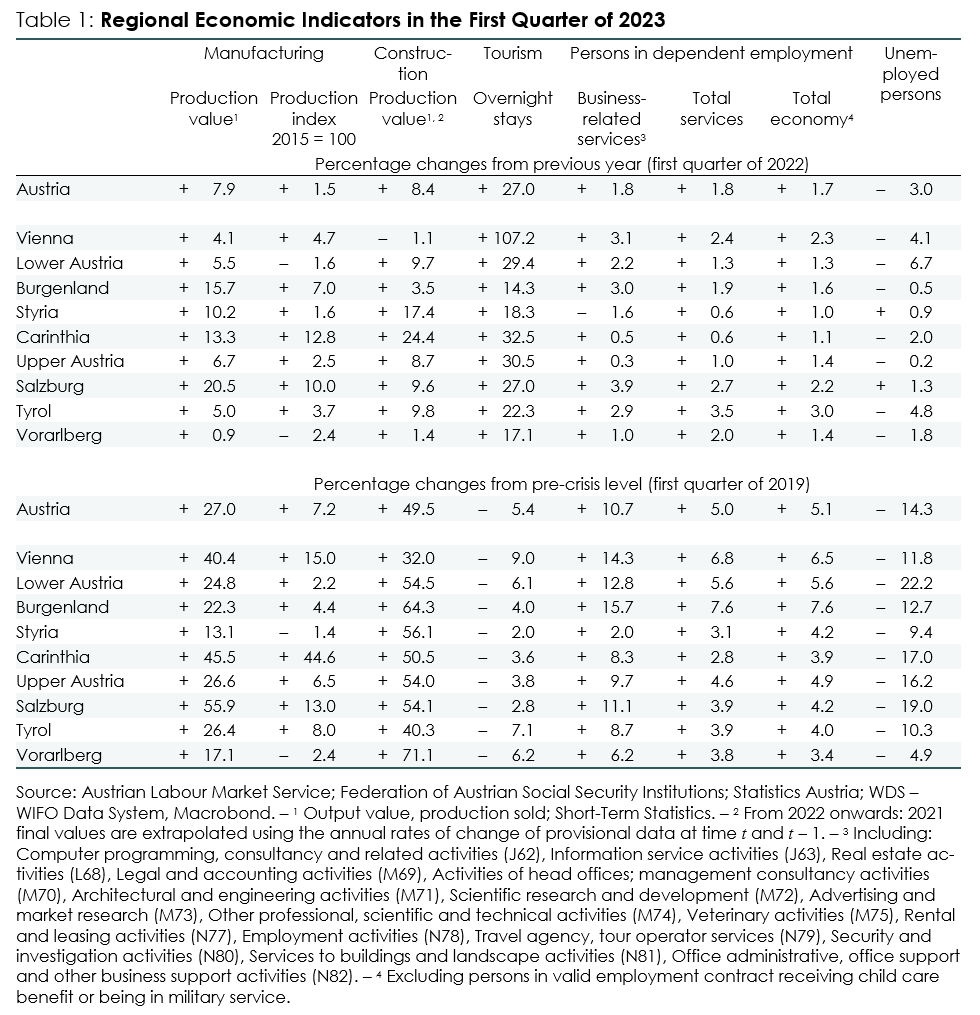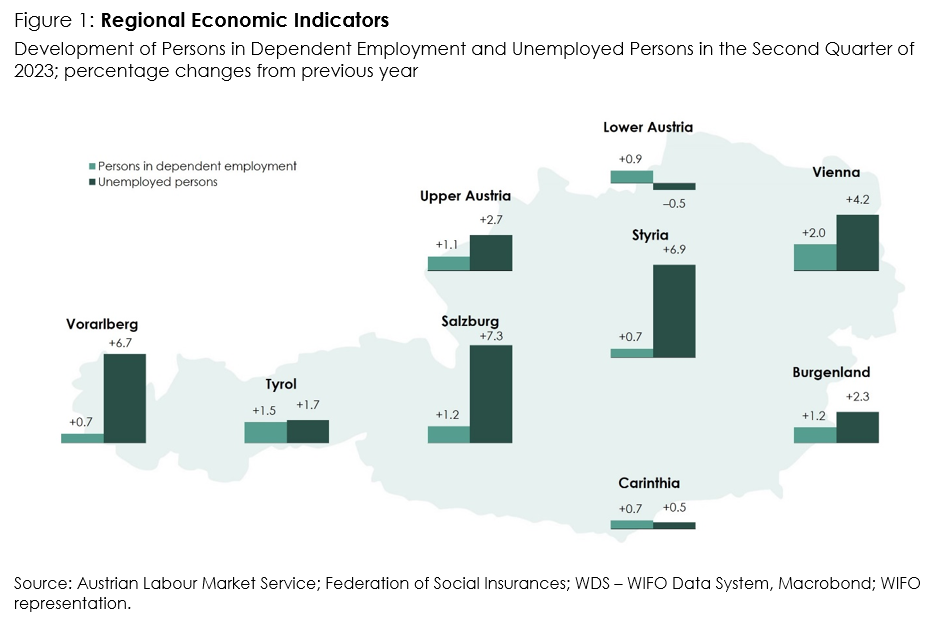
Weak Economic Momentum in the Federal Provinces
Signs of a downturn in industry
Compared to the previous year, industry still showed a slight positive growth of +0.4 percent in spring 2023 but compared to the previous quarter it already declined by –0.4 percent1. Recently, the production index for the manufacturing of goods also declined slightly, but was still significantly more favourable in Austria than the EU-27 average. In the WIFO-Konjunkturtest (business cycle survey), domestic industrial companies also assessed the current business situation increasingly negatively. While at the beginning of the year the companies still named a lack of materials, capacities or labour as the most important production constraints, these have now been replaced by a lack of demand as the most pressing production constraint. A comparison of the provinces shows a wide range of growth rates in nominal sold production (between +0.9 percent in Vorarlberg and +20.5 percent in Salzburg). Despite all this, employment in industry continued to develop robustly: it made a positive contribution to overall employment growth in the first quarter of 2023 in all federal provinces except Vorarlberg.
Construction investments continue to decline
The continuing pressure on construction costs and construction prices left little room for a recovery in construction in spring 2023. Real construction investments continued to decline, as in the two previous quarters. The weak development in the first quarter of 2023 was primarily driven by residential construction, which fell by 5.4 percent year-on-year. The dynamics of nominal construction output also slowed on average from +9.9 to +8.4 percent. While the southern region (Styria and Carinthia) recorded particularly high growth rates in production sold, Vienna, Vorarlberg and Burgenland already showed very low increases or even declines in nominal construction output. The WIFO flash estimate and the WIFO-Konjunkturtest (business cycle survey) of July 2023 point to a continuation of weak construction activity in 2023.
Winter tourism exceeds expectations
Tourism demand in winter 2022-23 was less affected by price increases than feared at the beginning of the season. With 69.3 million overnight stays from November 2022 to April 2023, winter tourism not only delivered the best result since the COVID-19 crisis, but was also able to significantly reduce the gap to the record result of the pre-crisis winter. This positive overall development is also reflected in the regional overnight stays. Vienna stands out with an increase in overnight stays of 107.2 percent in the first quarter of 2023, but also shows the greatest gap to the pre-crisis level (–9.0 percent). With double-digit growth in overnight stays, all other federal provinces also continued to be characterised by catch-up effects after the pandemic. Current guest surveys indicate robust tourism demand for the 2023 summer season, but with a certain tendency towards frugality, especially among the domestic population.
Unemployment rises again for the first time
The labour market also reflected the stagnation of the Austrian economy. Employment growth compared to the previous year was still slightly positive in the second quarter of 2023, but lost momentum in all federal provinces. In the first quarter of 2023, unemployment increased in two federal provinces (Styria and Salzburg) for the first time since the beginning of 2021; in the following quarter, all federal provinces, with the exception of Lower Austria, experienced an increase in unemployment figures. The dynamics of labour supply remained robust on a national average but shows noticeable regional differences. In Western Austria its growth decreased from the first to the second quarter, while in Vienna it increased above average.



